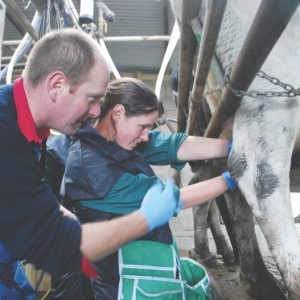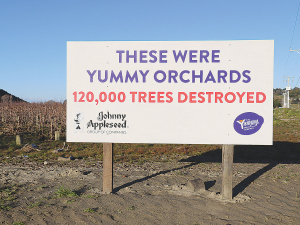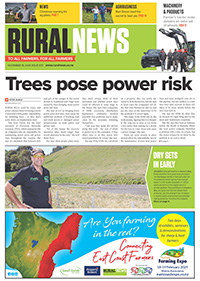The Warrnambool Veterinary Clinic is trying to reverse that trend with training sessions to encourage farmers to adopt best practice methods when inserting the product.
These practices include wearing gloves and cleaning teat ends with sterile swabs for strict hygiene, making sure the Teatseal is inserted only in the teat canal and not too deeply in the udder, and ensuring it mimics the teat plug by stripping the Teatseal down to the teat end.
Dr Jon Kelly told recent Warrnambool Veterinary Clinic FarmChat forums in Koroit and Mepunga that Teatseal has a proven track record in reducing mastitis at calving but incorrect insertion methods are weakening its effectiveness.
“Teatseal is a game changer but it has to be inserted properly,” he says. “There is a phenomenal improvement in mastitis when Teatseal is applied. There is a good uptake of Teatseal in the region and it has been used with great success, but we have seen mastitis creeping back up which is probably due to how Teatseal is being inserted.
“There is a constant need for education on how to apply it, particularly when there are staff changeovers and new people have to learn the proper methods.
“The key is putting it in properly. It has to stay in the teat canal, not go as far as the udder, and to treat all quarters in order. It should not be massaged into the udder.”
At the first milking Teatseal must be removed in fresh cows by stripping teats 10-12 times.
Kelly says reducing exposure to environmental mastitis bacteria during calving is the major reason for Teatseal’s success.
Teatseal also works by stopping milk leakage when a cow is dried off, enabling dry cow antibiotic therapy to work and preventing introduction of the environmental bacteria.
At least two-thirds of mastitis is caused by environmental conditions – mud and faeces or dust – with Strep Uberis the most prevalent mastitis bug.
Methods to reduce exposure to the bacteria include calving on dry clean pasture or a dry clean calving pad, bringing cows into the shed as soon as possible after calving to milk out and check, and taking care with pre-milking preparations of udders.
“Most mastitis happens in the first month after calving. Calving is the highest risk factor and it has everything to do with the conditions she is calving in. Controlling mastitis at calving will set up your whole season.”
Kelly says farmers needed to rotate springer paddocks as much as possible, and always milk freshly calved cows twice a day.
He says Teatseal, formulated to prevent bacteria entering the teat, reduced incidence of mastitis during the dry period and early lactation and prevented clinical mastitis in heifers at calving. “Some farmers might think it is worthwhile for heifers but worry how to do it. The reality is with some training and preparation 99% will stand there and handle it surprisingly well.”
Research by Zoetis shows that heifers produce a similar rate of Strep Uberis infection to cows, so management of a clean environment to calve and teat sealant could be beneficial in reducing the rates of infection, he said.
Kelly cited examples of south-west Victoria farms that had saved nearly $30,000 in mastitis treatment costs after introducing Teatseal.
One farm had reduced its mastitis rate in heifers from 20% to 4% and in cows from 17% to 4% after applying Teatseal, while another had dipped from 33% to less than 10%. At the same time their BMCC improved. “Prevention is always better than treatment,” Kelly adds.
Countdown Downunder research shows the best ways to reduce mastitis at calving are to reduce exposure to environmental mastitis bacteria, take good care with heifers and freshly calved cows, check that milk is suitable to go in the vat and promptly finding, treating and recording clinical cases in freshly calved cows.
“Drying off will give your cow the best chance for the next lactation,” he says.
“It is a farmer’s only chance to ‘re-set’ the cow with regards to milk quality for the next lactation.”
















